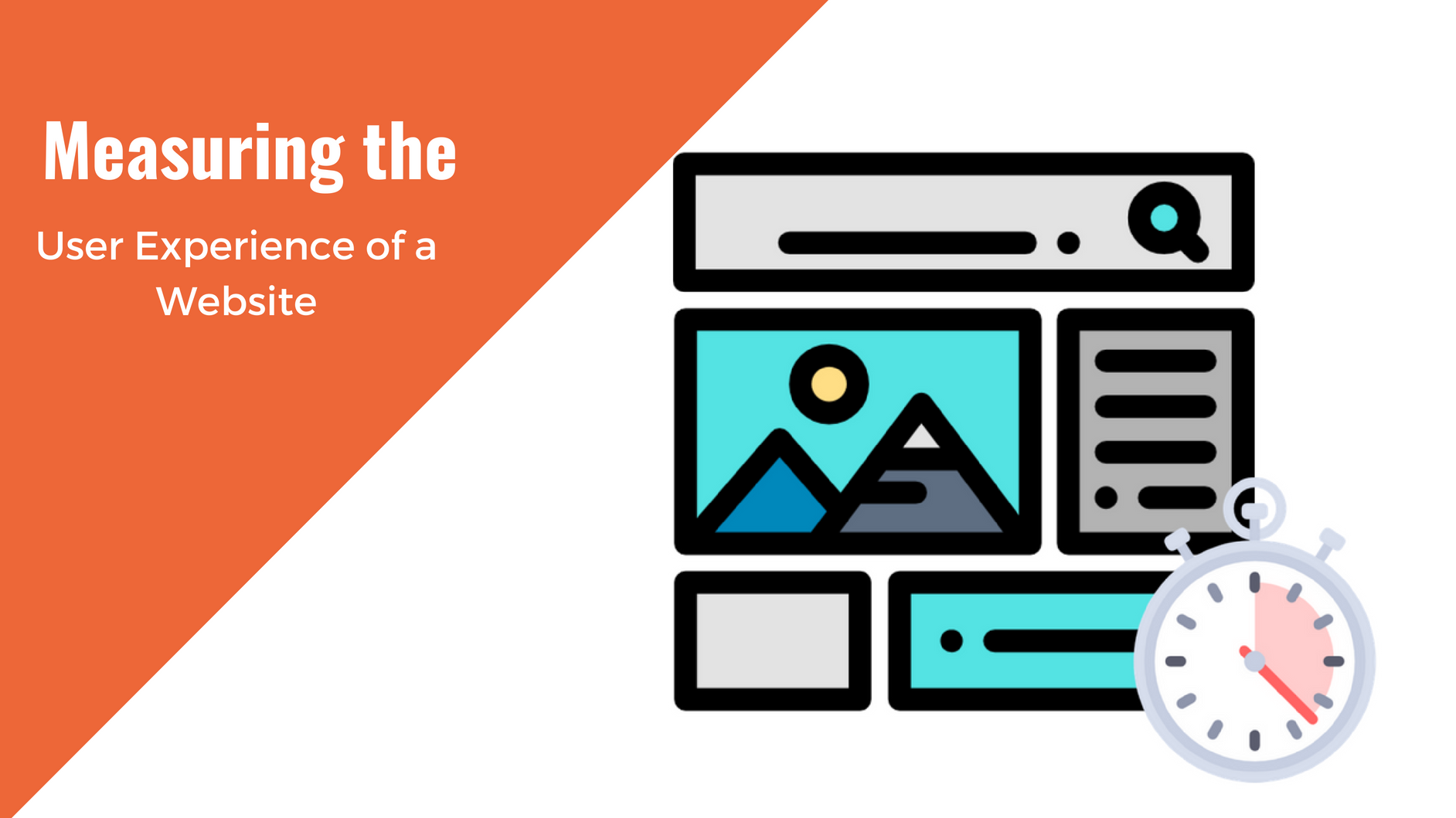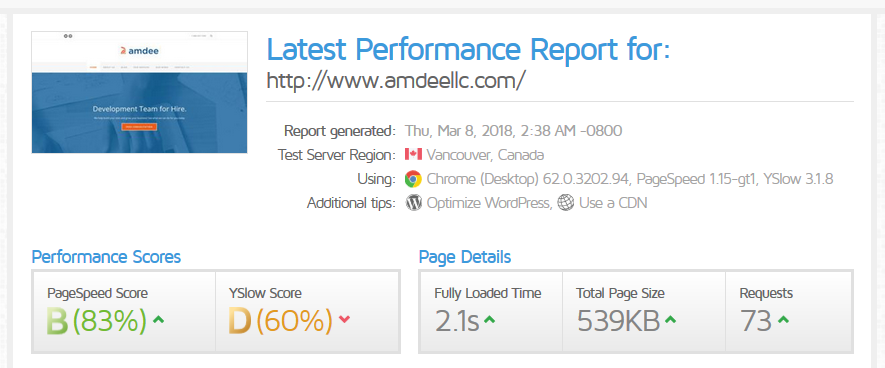With spring right around the corner, you are surely excited to start cleaning out the cabinets, dusting the cobwebs, putting away winter coats, and tending to the garden.
Okay, maybe not all of that.
While spring definitely comes with its fair share of cleaning tasks, they do not all relate to your home. In fact, spring is the perfect time for you to clean up your website, get rid of the clutter, and move forward with an optimized, fast loading site your site visitors will love to visit time and again.
Today we are going to share our 6 best tips for cleaning up your website.
These tips are for both the front and the backend so that by the time springs rolls around, you’ll be all set to enjoy the warm weather, and increase in site traffic.
1. Make a Backup of Your Website
Before jumping into anything, it is crucial to first create a backup of your entire website. The last thing you want to do is lose your entire website in the blink of an eye because you accidentally clicked a wrong button.
With a backup, you can easily restore your website in its entirety should anything go haywire during your cleaning efforts.
If you use WordPress as your content management system, some of the best backup plugins, that come with easy one-click restore options, include:
After you’ve made a backup of your website, whether manually using an FTP client such as FileZilla, or one of the many backup plugins available for WordPress users, move on to the next step.
2. Check your Plugins and Themes
If you have had your website for some time, and haven’t cleaned up in a while, chances are high you have accumulated many plugins and themes that you may have needed at one point but no longer use.
Besides taking up space on your website’s server, many of those unused plugins and themes may be affecting the speed and performance of your website.
And, since user experience is paramount to driving traffic to your website and retaining loyal followers, it’s a good first step to look into uninstalling any plugins or themes on your website that you no longer use or need.
In addition, check out the plugins that are still in use on your website and make sure there is nothing wrong with them. Make sure they are all updated, and if they do need updates, make sure you do them.
Lastly, make sure your plugins are still compatible with your version of WordPress, and that there aren’t plugins that can be traded out for another that may combine multiple plugin functions into one.
By doing this you will remove some serious clutter on your website and make room for a fresh new year full of new plugins and themes.
Bonus Tip: if you navigate to Dashboard > Updates, you can see all necessary updates in one place.
For example, any themes or plugins that need updating, the WordPress core, and any performance updates you need will appear here for you to easily click and update.
3. Check Your Site’s Speed and Performance
After getting rid of your site’s old plugins and themes it’s time to test the speed and performance of your website using any one of the available free speed testing tools.
Some of our favorites are Pingdom and GTmetrix.
Take a look at what happens when we test our very own website using GTmetrix:
From this test, we can see exactly where we need to do a little spring cleaning:
- Landing page redirects are our biggest issue right now, which cause site visitors to wait longer for pages to load
- Leveraging browser caching will allow frequent site visitors to receive our site’s static pages quicker
- Removing query strings (aka the “?” in static URLs) can help those web pages cache for site visitors and deliver quicker when requested
As you can see, even our website is not perfect, just showing you the importance of spring cleaning each year to make sure your website performs at its best.
To make sure your cleaning efforts have made a difference, we recommend you make the suggested changes to your website, and re-test to see how things have improved. This will show you the impact cleaning up your site has had on your website’s speed and performance.
4. Content Cleanup
When it comes to your website’s content, there are many things you can do to clear out space and boost your site’s speed and performance.
Let’s take a look at some of the best:
Limit Post Revisions
Every time you click “Save” while drafting a post or page on your website, the revision is stored in the database for later use if you need it.
However, this tends to clutter resources. While a full database may not directly affect the speed and performance of your website, it definitely adds unnecessary strain on it. That’s why limiting the number of saved revisions to say 3, can help a lot in the future.
Helping you to remove old post revisions are plugins like WP-Optimize, Optimize Database after Deleting Revisions, and WP-Sweep.
Remove Old Posts and Page Drafts
It’s not enough to only remove old post revisions.It’s also important to get rid of actual post and page drafts that you have sitting in the WordPress queue.
To do this, navigate to All Posts or All Pages in your WordPress dashboard and click on the link labeled Drafts. Look through everything that pops up and delete everything that you don’t need anymore.
Just make sure to permanently delete them from the trash. If you don’t, they will still be on your website taking up space and affecting your website speed.
Bonus Tip: use a plugin such as Image Cleanup to get rid of old or unused images, as well images that are missing metadata, which just like old posts and pages, take up much needed space and can hold your site back from performing at its best.
Manage Comment Spam
Comment spam is one of the things that every website owner has to deal with, regardless of how much traffic your site sees on a daily basis. While it’s a pain, there is no excuse for not handling the spam on the backend (or frontend) of your website.
Check out effective anti-spam plugins such as Antispam Bee, Anti-spam, and Akismet. Just remember, while some solutions are good at filtering out spam and permanently removing, others only move spam to your spam folder, where you’ll have to manually delete the comments that are actually spam.
You might also consider installing captcha technology on your website to reduce spam comments and registration attempts, or even employ the help of an experienced web developer to help you filter out unwanted spam.
Create New Content
Nothing says neglect like a website that has old or dated content on it. Now is the time to make note of the pages you haven’t update in a while but which users frequent, such as your About Us Page or Contact Page.
It’s also a good idea to begin creating a long-term content management plan so you can start churning out new content as soon as possible for site visitors to enjoy.
If you haven’t already, get in on the social media action and start sharing your content where your target audience hangs out as well. This will help drive fresh new visitors to your website and propel you to more success this year than you’ve ever seen before.
5. Optimize the Database
Cleaning out the database, or the core of your entire website is important to do any time you dive into a spring cleaning adventure. While the other areas we’ve already covered are seen anytime you log in to the backend to make updates, the database tends to be neglected because you don’t actually see what it’s storing. As a result, it can be easy to forget that it too accumulates lots of clutter and unused data.
Without getting into too much technical detail, which you can learn about here if you’re interested, consider using an intuitive plugin such as WordPress Clean Up & Optimizer or WP-DBManager, both of which is designed to get rid of obsolete data from your site’s database.
6. Take a Peek at the Frontend
The last thing you should do as you plan to clean up your website is take a look at the frontend of your website and make sure it still suits the purpose you envision for your site:
- Make sure each web page or post is still useful for your target audience
- Ensure that the visual appeal of your website is pleasing and easy to navigate, catering to those on mobile devices or people with accessibility issues
- Check for any images or content that can be shortened or removed to make for a better user experience
- Update any personal information so site visitors see current information
- Check highly converting content and update it as you see fit
- Make sure all important links, including those that link out to social media accounts, are working
Over time, your website is bound to collect a lot of clutter that needs to be cleared away so your site can continue to grow. By cleaning up your site each spring, you eliminate the bloat, help aid the speed and performance of your site, and give your site visitors the best user experience possible.
So, what are you waiting for? Start cleaning! Remember, if you run into any problems we’re also a quick message or tweet away.
Other articles you may enjoy:
- WordPress Theme Choice: Custom, Premium or Free?
- 7 Best FREE WordPress Calendar Plugins
- 5 Common Mistakes That Hurt Usability
You May Also Like

Having a website is an absolute necessity for any business. Gone are the days when you could simply update your website once and forget about it for months on end. In today’s ever-changing digital landscape it is important to constantly track and measure how well your website performs, as well…
read more >
Thomas Bertram (T. Bert) Lance famously said, "If it ain't broke, don't fix it." Unfortunately, T. Bert Lance couldn’t foresee the future. He didn’t know that over 94% of Americans would be on the internet by 2024. If your website doesn't receive periodic updates or isn't accessible, users can become…
read more >




